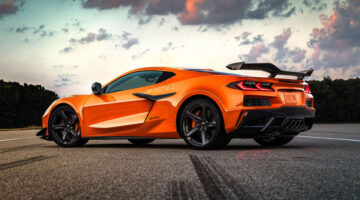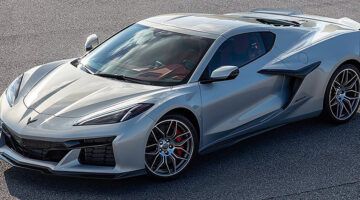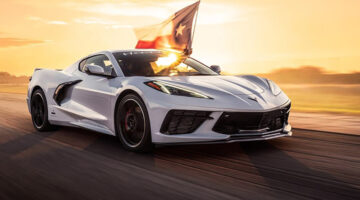The all-new seventh generation Chevrolet Corvette Stingray is finally here. We take it out on the roads in the USA.
[Not a valid template]“This is only the seventh time we’ve done this,” Tadge Juechter, the chief engineer on the new Chevrolet Corvette reminded journalists at the international launch event in Washington DC. Which is pretty remarkable, considering the car is one of Chevrolet’s iconic models and has been around for 60 years. So this new car needs to be good. As Chevrolet’s American models increasingly become available around the world, the Corvette needs to be able to compete with sports cars from Europe and dispel the old myths about American cars – that they’re only good in straight lines and that US customers wouldn’t know good interior quality if it slapped them in the face with substandard plastics.
The briefing, ahead of a day-long drive into the Virginia countryside, is promising. On paper, the seventh-generation Corvette has a lot going for it. Built on an all-aluminium frame, with a bonnet and removable roof panel made of carbonfibre as standard, it reintroduces the iconic Stingray name for the first time in quite some time. Juechter admits that previously, the Corvette has not been worthy of the moniker. But this time he thinks they’ve come up with something special.
The development team spent a lot of time talking to Corvette racing team, getting hints and tips on how to include racing features to benefit the road car. So the final design is one based on aerodynamics, with a bonnet vent on all models that channels air from the front bumper over the windscreen, adding downforce and pushing the front of the car into the tarmac for more responsive handling. On the track-aimed Z51 package-equipped car that I’ll be driving today, that airflow continues through the back of the car and out of vents in the rear lights, with rear inlets for cooling the rear transaxle and brakes, and a larger rear spoiler to counteract that extra downforce at the front.
The result is a seriously fine looking machine, but we’ll get to that in a second. Chevrolet is adamant that this Corvette is not just a pretty face – it has the aerodynamic performance, and the lightweight, high-tech chassis that means it’s not just about a big V8 engine.
Of course, it still has said engine. Under the bonnet is a 6.2-litre V8 pushing out a claimed 455bhp as standard, or 460 in the Z51 car. It’s attached to a seven-speed automatic gearbox that sits at the rear of the car to improve weight distribution. Chevrolet promises a 0-100kph time of less than four seconds.
The manufacturer isn’t being shy about the performance potential of the new Corvette – the press presentation explicitly mentions the Porsche 911, which is a lofty benchmark indeed. On paper then, Chevy presents a very intriguing case. Time to see if the driving experience matches up.
First things first – the new Stingray looks brilliant in the metal. I end up with a beautiful blue Z51-equipped model, distinguishable chiefly by its larger tailgate spoiler, and it’s a sleek, very modern-looking sports car that makes no attempt to hide its intentions. There’s a slight hint of Ferrari California at the front end, but it’s less subtle and more in-your-face than that; more, well, American. Yee-haw.
My chief complaint with the old Corvette was the quality of the interior, which was pretty dreadful. Chevrolet, to their credit, admits that it wasn’t up to snuff, and the C7’s cockpit is much more pleasant and well screwed together. There are still a few slightly cheap-feeling plastics but it’s a vast improvement on the C6, and a more attractive design. The driver’s side is more enclosed, with the instruments all facing towards the left-hand sports seat, with the result that the passenger temperature controls are relocated to the right side of the car. It’s all about the driver now.
A large touch screen houses the infotainment system, while another colour screen sits between the analogue (and slightly uninspiring) speedo and tachometer in the instrument binnacle, relaying additional information.



